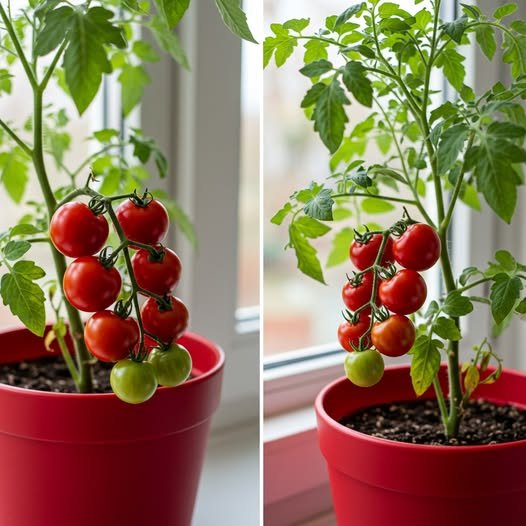Growing Tomatoes Out of Season at Home – Still Abundant and Easy
Tomatoes are one of the most popular crops for home gardeners. Their vibrant color, juicy flavor, and versatility in the kitchen make them a household favorite. While tomatoes are typically considered a warm-season crop, it’s entirely possible—and surprisingly easy—to grow them out of season with a few smart techniques and a bit of attention.
Many people assume that growing tomatoes outside their natural season requires high-tech greenhouses or expensive equipment. The truth is, with some planning and simple tools, you can enjoy a healthy tomato harvest right from your home—even during the cooler months.
Choosing the Right Variety
When growing tomatoes out of season, selecting the right variety is key. Smaller and faster-maturing varieties like cherry tomatoes, grape tomatoes, or determinate bush types tend to perform better in limited light and space. These types are ideal for container gardening or indoor setups.
Heirloom varieties can also work, but be mindful that they may take longer to mature. Check seed packets for information on “days to maturity,” and look for varieties labeled as “early,” “cold-tolerant,” or “compact.”
Where to Grow
One of the simplest methods to grow tomatoes off-season is indoors, either near a sunny window or under grow lights. Tomatoes need at least 6–8 hours of direct sunlight each day. If natural light is scarce, LED grow lights are an excellent alternative. They’re energy-efficient and provide the full light spectrum needed for plant growth.
Balconies, patios, or sheltered verandas can also serve as ideal growing areas during mild winters. A plastic sheet or portable greenhouse can help retain warmth and protect the plants from cold wind or frost.
Soil and Containers
Use well-draining, nutrient-rich potting mix to give your plants a strong start. Tomatoes have deep root systems, so containers should be at least 12 inches deep. Fabric grow bags, large pots, or recycled buckets with drainage holes all work well.
It’s important to remember that tomatoes are heavy feeders. Enrich your soil with compost or organic fertilizer before planting. As the plants grow, regular feeding every two weeks will help maintain healthy foliage and fruit production.
Temperature and Watering
Tomatoes thrive in temperatures between 70°F to 85°F (21°C to 29°C) during the day and slightly cooler at night. If you’re growing indoors, try to maintain a stable room temperature. Avoid placing plants too close to cold windows or drafty doors.
Consistent watering is essential. Keep the soil moist but not soggy. Underwatering can lead to blossom-end rot, while overwatering can cause root rot. A good rule of thumb is to water when the top inch of soil feels dry.
Supporting Growth Indoors
Tomato plants can grow tall and heavy, especially when fruiting. Use stakes, cages, or trellises to support the stems and keep them upright. This not only prevents breakage but also improves air circulation, reducing the risk of disease.
Since wind and pollinators are limited indoors, hand-pollination is often necessary. Gently shake the plant or use a soft brush to transfer pollen between flowers. This small effort can significantly increase fruit set.
Pest and Disease Management
Even indoors, tomato plants can attract pests like aphids, whiteflies, or spider mites. Inspect your plants regularly and remove any insects by hand or with a blast of water. Neem oil or insecticidal soap can be used as a natural remedy if infestations persist.
Avoid overwatering and ensure proper spacing between plants to prevent fungal diseases like powdery mildew or blight. Good airflow is crucial for healthy plant development.
Harvesting and Enjoying
Tomatoes are usually ready to harvest when they’ve developed full color and are slightly soft to the touch. Depending on the variety, this could be anywhere from 60 to 85 days after planting. Regular picking encourages continued fruit production.
Growing tomatoes out of season might sound like a challenge, but with a few basic tools and some know-how, it’s completely doable. In fact, many gardeners find that off-season tomatoes grow with fewer pests and diseases than those grown in the peak of summer.
The joy of harvesting your own tomatoes during a time when fresh, flavorful produce is hard to find is incredibly rewarding. Whether you’re adding them to a salad, cooking them down for a homemade sauce, or simply enjoying them fresh off the vine, your homegrown tomatoes will be a welcome treat—any time of year.



